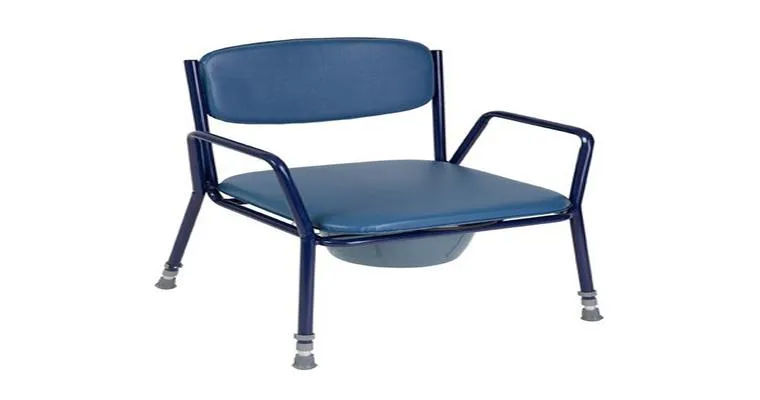In today's healthcare landscape, understanding "Durable Medical Equipment (DME)" and "medical supplies" is essential for patients, caregivers, and healthcare professionals. DME refers to items that are designed to withstand repeated use and are primarily used to aid individuals with medical conditions or disabilities. On the other hand, medical supplies include a broader range of products that may be used in various healthcare settings. This guide will explore the different types of DME and medical supplies, their importance, and how to choose the right equipment for your needs.
What is Durable Medical Equipment?
Durable Medical Equipment is defined as equipment that is durable, medically necessary, and appropriate for home use. Examples include wheelchairs, hospital beds, oxygen equipment, and mobility aids. DME is typically prescribed by healthcare providers and is often covered by insurance, making it an essential part of patient care.
The Importance of Durable Medical Equipment
1. "Improved Quality of Life": DME allows individuals with disabilities or chronic illnesses to maintain independence and improve their overall quality of life. For instance, a wheelchair can enable a person to move freely, while a hospital bed can provide comfort during recovery.
2. "Enhanced Safety": Many types of DME are designed to enhance safety for both patients and caregivers. For example, grab bars and shower chairs can prevent falls, reducing the risk of injury.
3. "Cost-Effectiveness": Investing in DME can be cost-effective in the long run by reducing the need for extensive medical care or hospitalization. Proper use of DME can lead to better health outcomes and reduced healthcare costs.
Types of Durable Medical Equipment
"Mobility Aids": These include wheelchairs, walkers, and canes, designed to assist individuals in moving safely and comfortably.
"Respiratory Equipment": Items such as oxygen concentrators and nebulizers fall under this category, crucial for patients with respiratory conditions.
"Monitoring Devices": Blood pressure monitors and glucose meters help patients track their health conditions from home.
"Rehabilitation Equipment": This includes items like physical therapy tools and exercise equipment that aid in recovery and rehabilitation.
"Bathing and Toileting Aids": Products like shower chairs and raised toilet seats make daily activities safer and more manageable.
What are Medical Supplies?
Unlike DME, medical supplies are consumables that are used in the treatment and management of patients' medical conditions. They can include items such as bandages, gloves, syringes, and wound care products. Medical supplies are often used in both home and clinical settings.
The Importance of Medical Supplies
1. "Essential for Treatment": Medical supplies are critical for administering medication, performing procedures, and managing wounds. They ensure that patients receive the care they need in a timely manner.
2. "Infection Control": Many medical supplies, such as gloves and masks, are essential for maintaining hygiene and preventing the spread of infections in healthcare settings.
3. "Patient Comfort": Quality medical supplies can significantly enhance patient comfort during treatment or recovery, aiding in overall healing.
Types of Medical Supplies
"Wound Care Supplies": Bandages, antiseptics, and dressings used to treat and manage wounds.
"Incontinence Supplies": Products such as adult diapers and bed pads for individuals with incontinence issues.
"Syringes and Needles": Essential for administering medications and vaccines.
"Diagnostic Supplies": Tools like thermometers and blood glucose strips used for monitoring health.
"Personal Protective Equipment (PPE)": Masks, gloves, and gowns to protect healthcare workers and patients.
Choosing the Right Durable Medical Equipment and Medical Supplies
When selecting DME and medical supplies, consider the following:
1. "Consult a Healthcare Professional": Always consult with your doctor or healthcare provider to determine the specific needs based on medical conditions.
2. "Insurance Coverage": Check with your insurance provider to understand what types of DME and medical supplies are covered under your plan.
3. "Evaluate Quality and Comfort": Look for high-quality products that are comfortable and suitable for the intended user.
4. "Research Suppliers": Choose reputable suppliers that offer a wide range of products and have good customer reviews.
5. "Consider Future Needs": Think about potential future needs and whether the equipment can be adjusted or adapted as conditions change.
Conclusion
Durable Medical Equipment and medical supplies play a vital role in patient care and quality of life. By understanding the importance of these items and how to choose the right ones, patients and caregivers can make informed decisions that enhance health and well-being. Whether you are a patient, caregiver, or healthcare professional, having a comprehensive knowledge of DME and medical supplies is essential for effective healthcare management.





